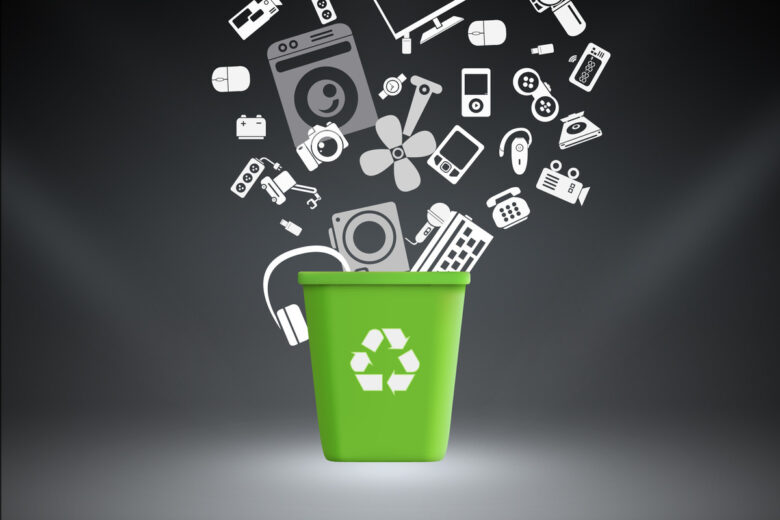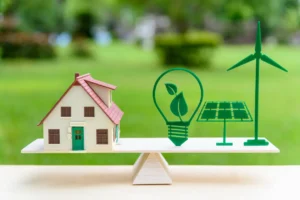Rapid technological advancements have revolutionized our lives, the way we work, and how we communicate with each other. With each new gadget comes an inevitable result–the growth of electronic waste (or e-waste). Our reliance on technology, from outdated smartphones to discarded computers, has created an environmental challenge. This blog will examine the environmental impact of electronic waste, how to reduce it, recycling methods that work, and what corporations, governments, and individuals can do to create a sustainable future.
E-Waste and the Environment
Electronic waste poses serious environmental risks because of the toxic components in electronics, such as mercury, lead, and cadmium. These materials, when improperly disposed, can leak into soil and water and contaminate ecosystems, endangering local communities. The sheer volume of electronic waste contributes to landfills being overloaded, as the mountains of discarded equipment continue to grow each year. The United Nations estimates that the world generated 53.6 million metric tons of e-waste last year. This number is expected to rise dramatically in the future. It’s not just improper disposal that has an impact on the environment. The extraction of raw materials to make new electronics also contributes to habitat destruction and carbon emissions and further exacerbates climate change.
Reduce E-Waste Sources
To reduce e-waste, the first step is to reduce it at its source. Conscious consumption is one of the best ways to reduce e-waste. Consumers can reduce their frequency of replacing electronic devices by purchasing durable, high-quality products. Choosing products with repair-friendly designs and modular components will allow users to replace or upgrade parts rather than discard entire devices. One solution is to adopt a “need-versus-want” philosophy when upgrading gadgets. Holding off on buying a new gadget until you absolutely need it can help reduce the amount of electronic waste.
Recycling E-Waste
E-waste recycling is an important step to manage the growing problem. Many electronic devices are made of valuable materials, such as silver, gold, and rare earth metals. These can all be recovered and reused. E-waste facilities are well equipped to safely handle toxic materials and remove reusable components. The recycling rate of e-waste is still low, with less than 20 percent being recycled formally. Consumers can use manufacturer take-back programs, drop-off points at retail stores, and community e-recycling drives to address this. Individuals can reduce the impact on the environment by recycling devices correctly.
Corporate Responsibility
The role of corporations in reducing electronic waste is undeniable. Tech companies can take the lead by designing products that are sustainable. It is important to use recyclable materials, create devices that last longer, and offer refurbishment and buyback programs in order to keep electronics available. Some companies have already launched innovative programs such as trade-in initiatives, which encourage consumers to return their old devices for refurbishing. Businesses can contribute beyond manufacturing by implementing responsible e-waste management practices in their own operations and setting an example for their employees and clients.
Government Regulations and Initiatives
The global e-waste problem cannot be addressed without government policies and regulations. Many countries have implemented e-waste laws that force manufacturers and retailers to be responsible for the products they sell. The European Union’s Waste Electrical and Electronic Equipment Directive (WEEE), for example, has established a precedent in holding manufacturers accountable for recycling and collecting e-waste. Local governments can also support the creation of recycling infrastructure for e-waste and launch campaigns to inform citizens about proper disposal. E-waste can be managed sustainably by combining strong regulatory frameworks with incentives to comply.
Future of E-Waste Management
Innovation and collaboration are key to the future of e-waste management. AI and robotics are used as cutting-edge technologies to improve the e-waste recycling and sorting processes. This makes them more efficient and scalable. Circular economy models, which emphasize the reuse and repair rather than the disposal of electronics, are also gaining popularity. Businesses, governments, and individuals need to work together in order to create sustainable systems. In the long run, it will take continued improvements in consumer behavior, policies, and technology to reduce e-waste and preserve our planet for future generations.
Personal Actions and Community Involvement
Individuals and communities play a crucial role in the management of e-waste. Personal habits like repairing rather than replacing electronics, donating them, and choosing environmentally friendly brands can have a significant impact. These efforts can be boosted by educating friends and family members about the dangers associated with improper e-waste management and encouraging them towards sustainable practices. Communities can create local repair networks and organize e-waste collection events. They can also advocate for recycling options that are more accessible. These collective efforts reduce e-waste and foster a shared sense of responsibility for the environment.
Conclusion
Tackling the e-waste crisis requires action from all corners of society–individuals, corporations, governments, and communities must unite under a shared goal of sustainability. We can reverse the trend of this problem by reducing consumption, recycling in a responsible manner, supporting eco-conscious companies, and advocating stronger eWaste policies. Every discarded gadget, phone, or laptop is an opportunity for a decision–a decision that can lead to a cleaner and greener future. Together, we can redefine the way we interact with technology to ensure future generations inherit a healthy world.
FAQs
1. What is e-waste, and what does it include?
E-waste is any electronic device that has been discarded, including smartphones, laptops, and televisions. E-waste is essentially any gadget with a battery or plug.
2. Where can I locate a recycling facility close to me?
There are many cities and municipalities that have specialized recycling centers for e-waste. Check with your local electronics retailer to see if they offer drop-off services in their stores. Earth911 provides a directory of recycling facilities in your area.
3. How should I dispose of my old gadgets that are still working?
Consider donating your old device if it is still functional to a school, charity, or community organization that could put it to good work. Many nonprofits will accept electronic devices to help fund educational or vocational programs.
4. Are refurbished electronics a good option?
Refurbished electronics are a great option. These devices are usually cheaper than new ones, and they reduce the demand for raw materials. Be sure to purchase from a reliable source who can guarantee that the products are safe and meet safety standards.




